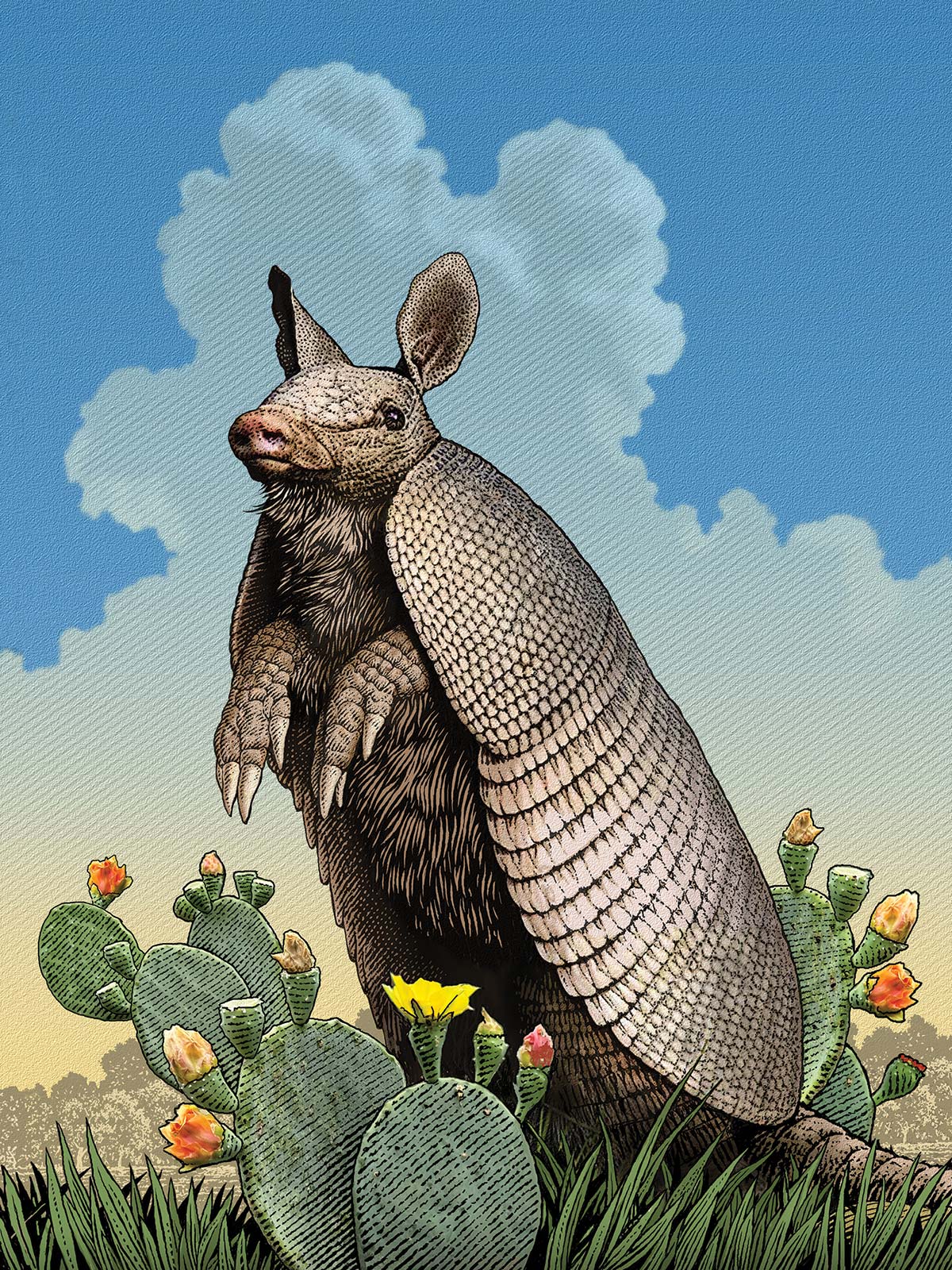No self-respecting Texan would expect the state small mammal to be fuzzy, friendly and cute. No way.
Instead, like us, it lives among rocks, mesquite trees, prickly pear and rattlesnakes. And it survives on earthworms, scorpions, wasps, beetles, cockroaches, fire ants, spiders and grubs. That explains why the nine-banded armadillo is a perfect symbol for the state.
During the 1995 Legislature, according to a Dallas Morning News story from the time, amid discussions in the Texas House over whether the longhorn or armadillo should be the state mammal, a compromise was reached: The longhorn would be designated the state large mammal and the armadillo the state small mammal.
“The armadillo possesses many remarkable and unique traits, some of which parallel the attributes that distinguish a true Texan,” the resulting House concurrent resolution reads, “such as a deep respect and need for the land, the ability to change and adapt, and a fierce undying love for freedom.”
Although there are about 20 species of armadillos across the Americas, the nine-banded is the only one found in the U.S. Armadillo means “little armored one” in Spanish, appropriate for the bony, armorlike plates that cover its back, head, legs and tail.
A nine-banded armadillo may actually have as few as seven or up to 11 bands in its armor, but it’s a bit tricky to get one to hold still long enough to count them. Most are about the size and weight of a large cat—2 1/2 feet from nose to tail and weighing around 12 pounds.
In his book ’Dillos: Roadkill on Extinction Highway?, author W. R. Klemm writes, “Armadillos are evolutionary relics, an animal version of the Bradley tank. As life goes on over eons of time, the armadillo endures, its walnut-sized brain oblivious to the law and perils of survival of the fittest.”
No newcomers to the Americas, the armadillo’s earliest relatives were the glyptodonts of around 35 million years ago, heavily armored creatures that evolved in South America and reached the size of a rhinoceros, weighing a few thousand pounds. Aren’t you glad you don’t have those digging up your yard?
Traveling up from South America, nine-banded armadillos arrived in Texas about 175 years ago. The weather then may have been wetter than it is today, making for good digging. They thrived and spread throughout the South and Southwest. They’ve even been seen as far north as Illinois and Nebraska.
Recent research has discovered that Texas armadillos are actually four different species that are nearly impossible to tell apart in the field, according to scientists in Chicago and France who studied their DNA.
Among ’dillos’ many unique traits are the ability to hold their breath for up to six minutes and walk across the bottoms of rivers and streams. When faced with wider bodies of water, they can swallow air to inflate their stomachs, giving them enough buoyancy to swim. It may take a poor bloated armadillo hours to release this excess air.
Rarely observed in daytime, these nocturnal animals are practically blind in daylight since their eyes lack light-detecting cells called cones.
Armadillos have long, sharp claws for digging burrows and unearthing insects and other edibles. Genetically related to anteaters and sloths, they have pointy snouts and long, sticky tongues for extracting ants and termites from their nests.
On the downside, armadillos are one of the only animals other than humans that can contract leprosy, although cases of humans getting the disease from handling armadillos are extremely rare.
What’s worse, they have an unfortunate tendency to leap straight into the air when startled, an ill-fated reaction if they are straddled on the highway by a car—one of their few predators. During the Great Depression, people ate them, referring to the dish as “poor man’s pork” or “Hoover hog.”
Armadillos have little body fat and a reptilian-like metabolism, so prolonged cold spells can be fatal. However, they don’t seem to be going anywhere anytime soon.
“Armadillos were busy digging holes in the ground long before the first humans arrived on earth,” Klemm writes. “Armadillos were sniffing out grubs long before alligators crawled out of the swamps. Armadillo ancestors were darting out of the way to keep from being trampled on by dinosaurs.”
Texans hope these ancient creatures are here to stay.



